项图表会将分类数据和分层数据显示为一组圆点。每个点代表一个数据值或一组数据值。
您可以使用图表配置编辑器,从 Looker 中的柱状图开始创建商品图表。
条目图表至少需要一个维度和一个测量。
例如,您可以创建一个商品图表,显示多个不同季节性合集维度值的商品数量衡量值。这些圆点将根据维度值着色。
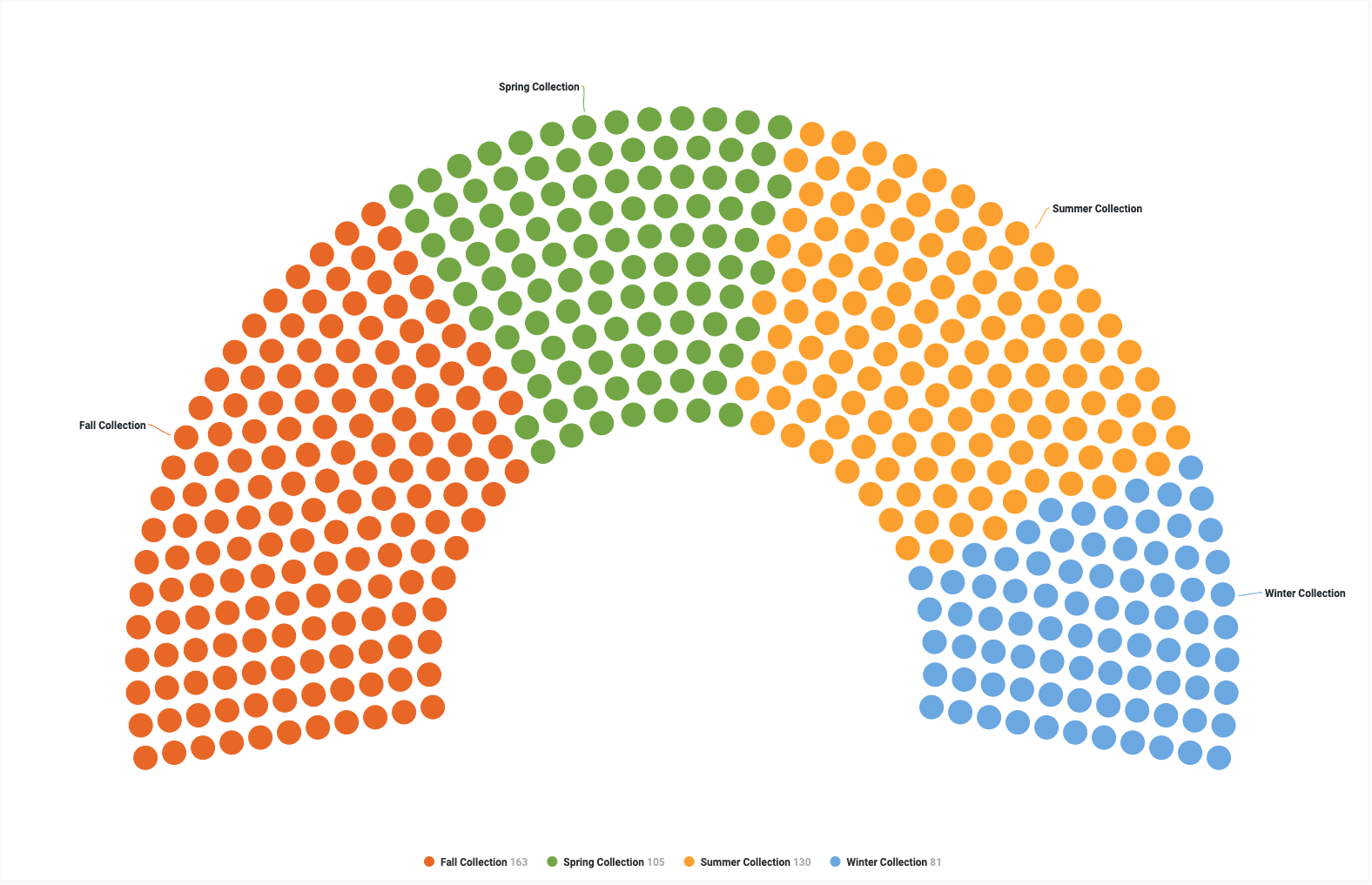
前提条件
如需访问图表配置编辑器,您必须拥有 can_override_vis_config 权限。
编写 JSON 代码段
如需创建商品图表,请从以下 JSON 代码段开始:
{
chart: {
type: 'item',
}
}
创建商品图表
如需创建商品图表,请按以下步骤操作:
在探索中查看柱状图,或在数据洞见或信息中心中修改柱状图。
条目图表至少需要一个维度和一个测量。您的起始图表可能如下例所示:
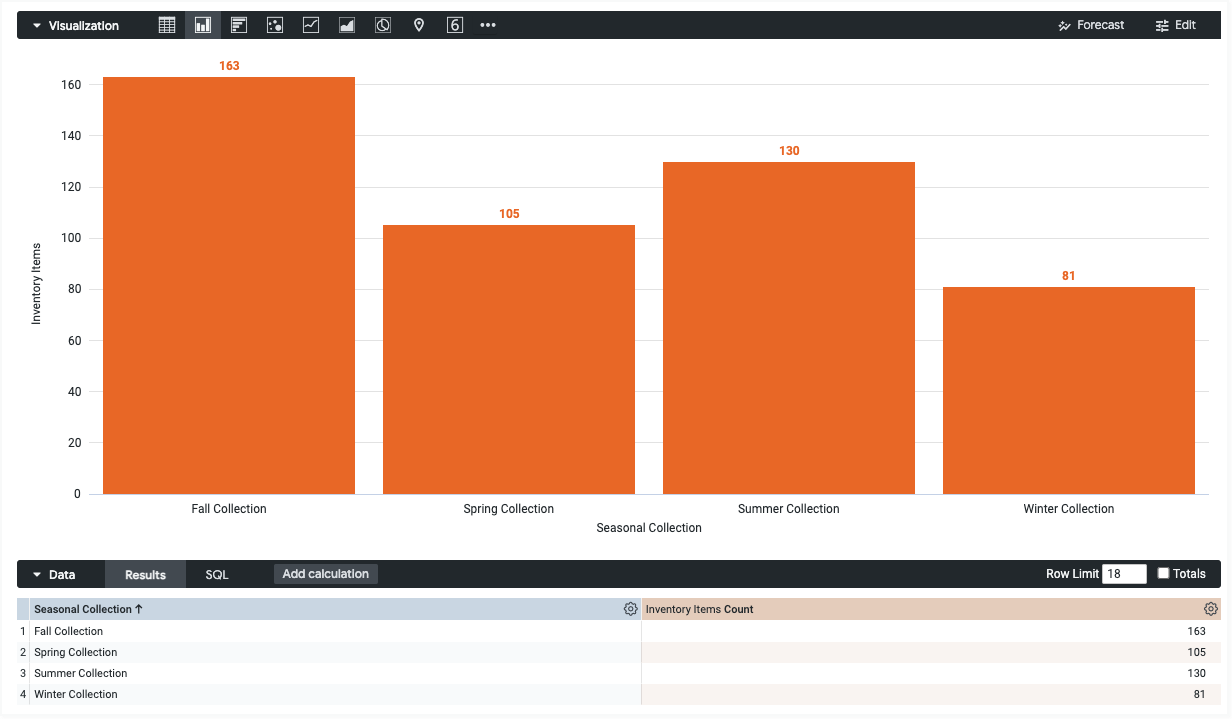
在可视化中打开修改菜单。
在绘图标签页中,点击修改图表配置按钮。Looker 会显示修改图表配置对话框。
选择 Chart Config (Override) 部分,然后输入本页编写 JSON 代码段部分中的 HighCharts JSON。
如需让 Looker 正确设置 JSON 格式,请点击 <>(设置代码格式)。
如需测试所做更改,请点击预览。
如需应用更改,请点击应用。系统将使用自定义 JSON 值显示可视化结果。
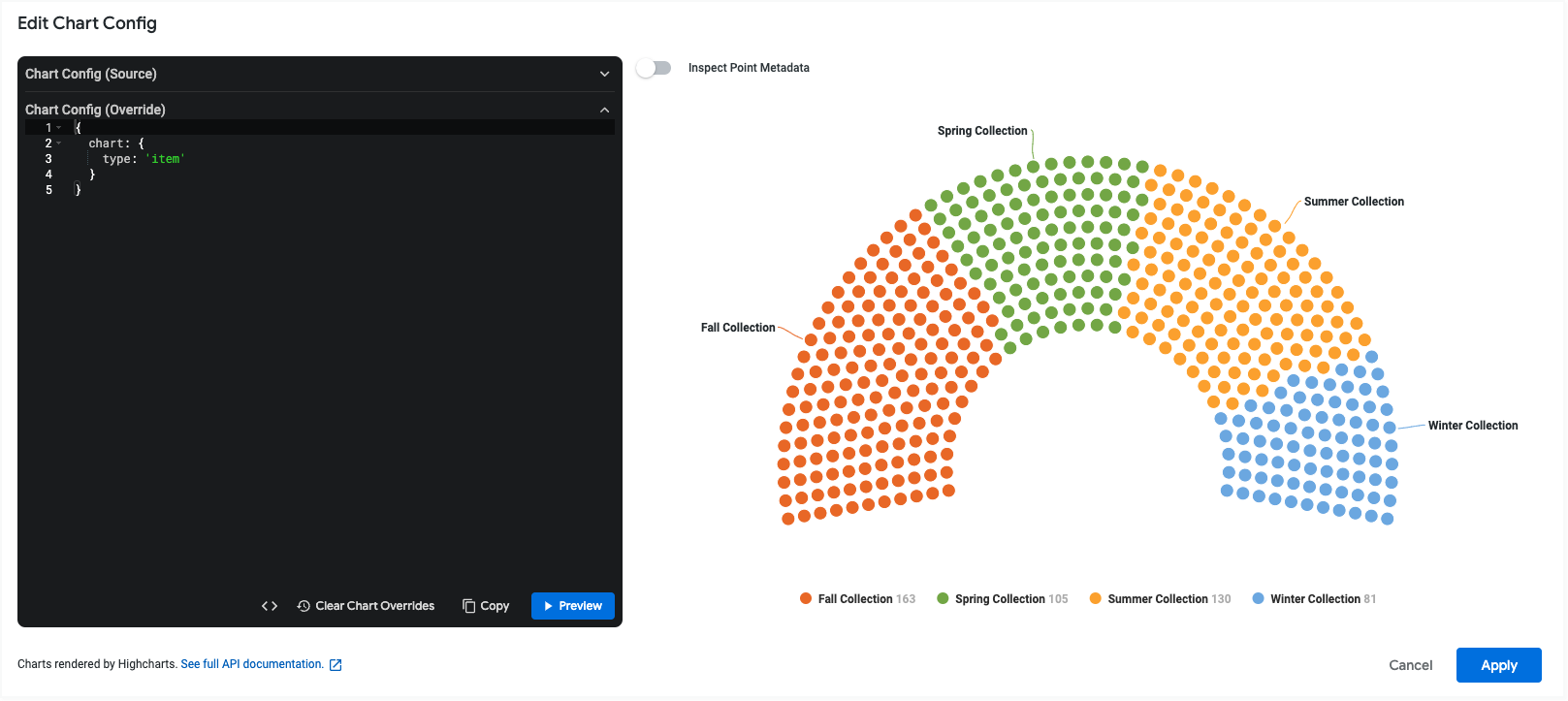
自定义可视化图表后,您可以将其保存。
更改布局样式
默认情况下,商品图表会以半圆形的形式显示商品。您可以使用 startAngle 和 endAngle 属性更改图表的形状。
例如,如需创建圆形项图表,请使用以下 JSON:
{
chart: {
type: 'item'
},
series: [{
startAngle: null,
endAngle: null
}]
}
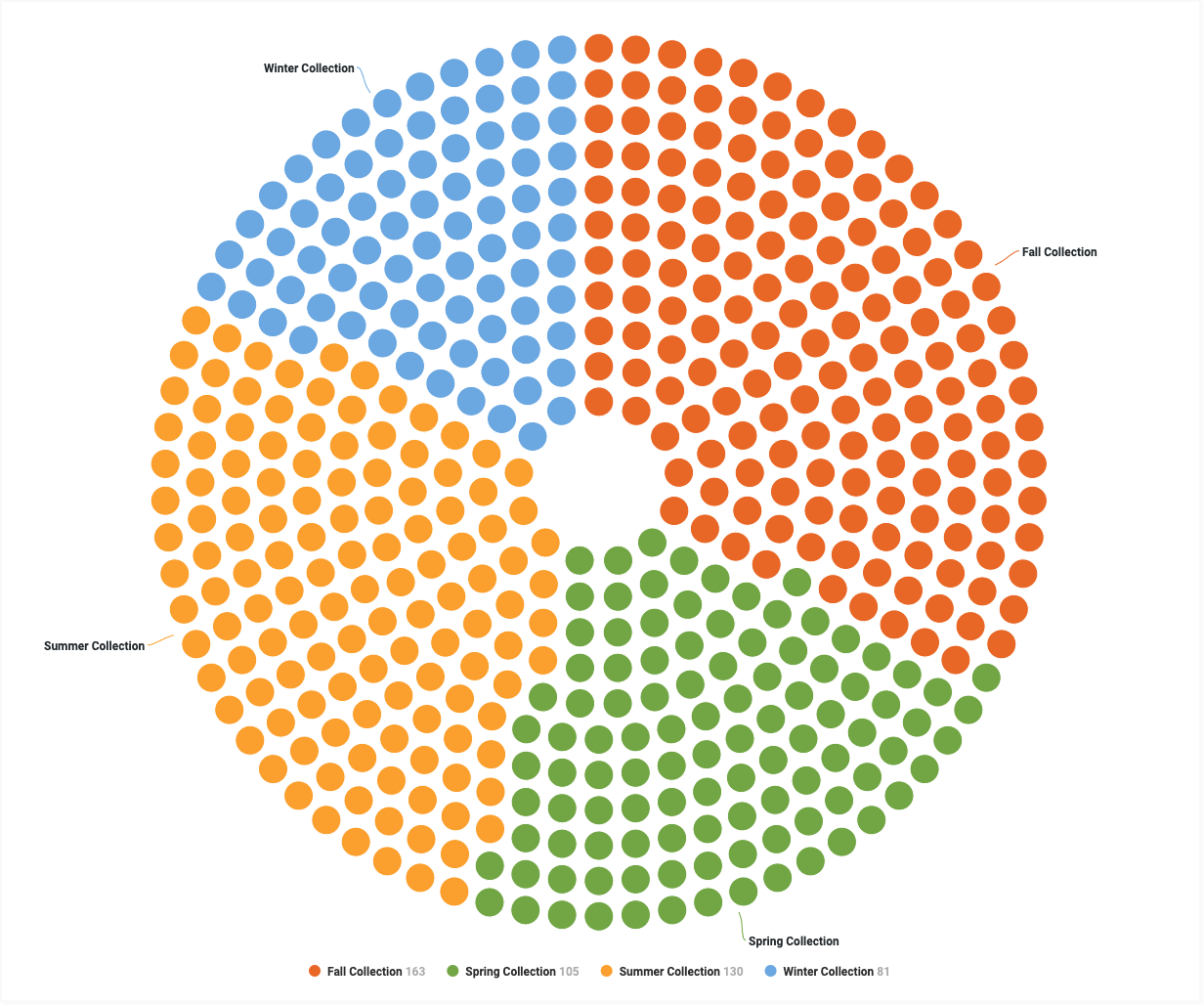
如需创建矩形项图表,请使用以下 JSON:
{
chart: {
type: 'item'
},
series: [{
startAngle: null,
endAngle: null
}]
}
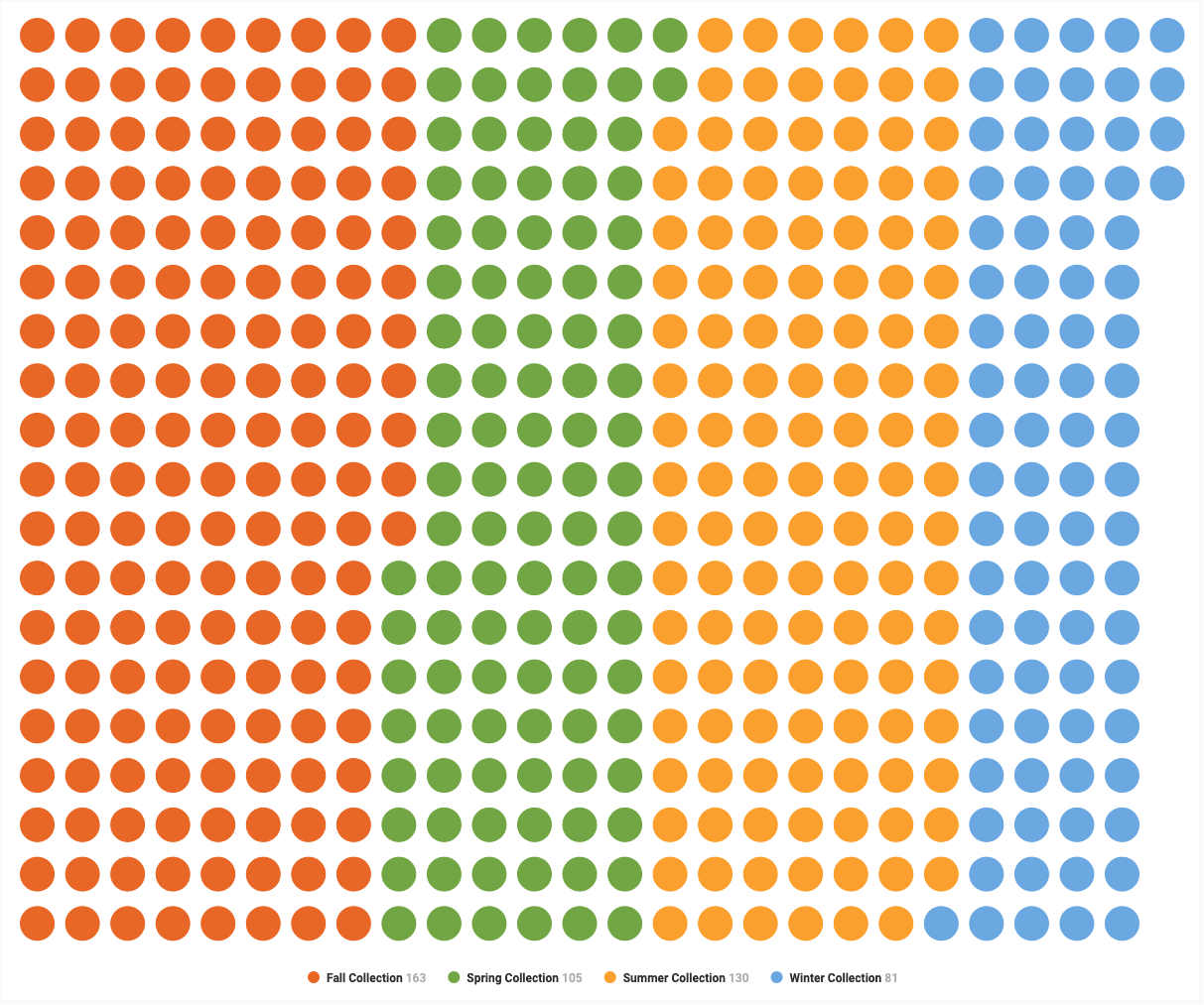
限制和要求
使用商品图表时,请注意以下限制和要求:
- 条目图表只需要一个测量。
- 条目图表至少需要一个维度。
- 条目图表不支持透视维度。
- 如果您的衡量值数量多于 Looker 可显示的圆点数量,Looker 会在图表下方添加一个标签,指明每个圆点代表的值数量。
- 条目图表只能呈现行数不超过 50 的查询。

